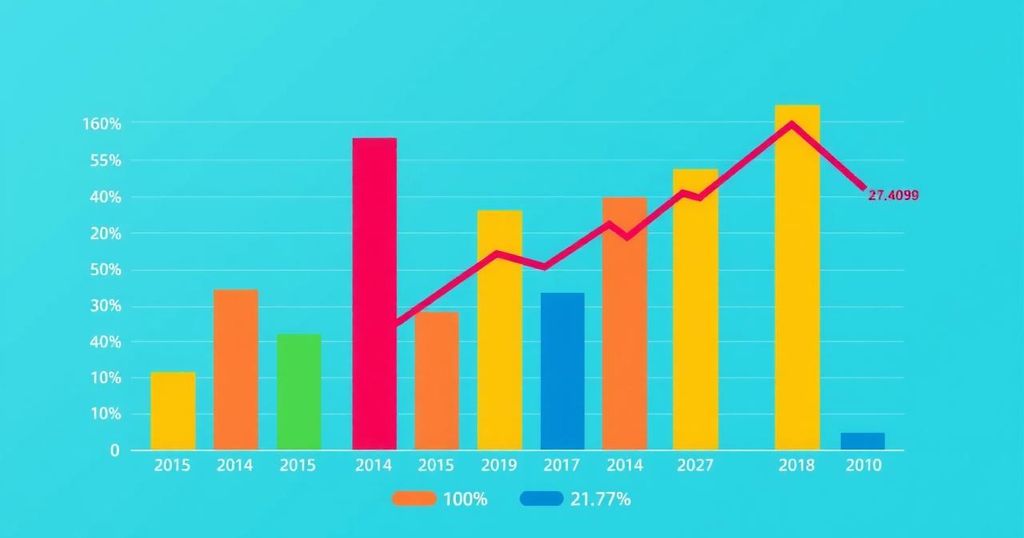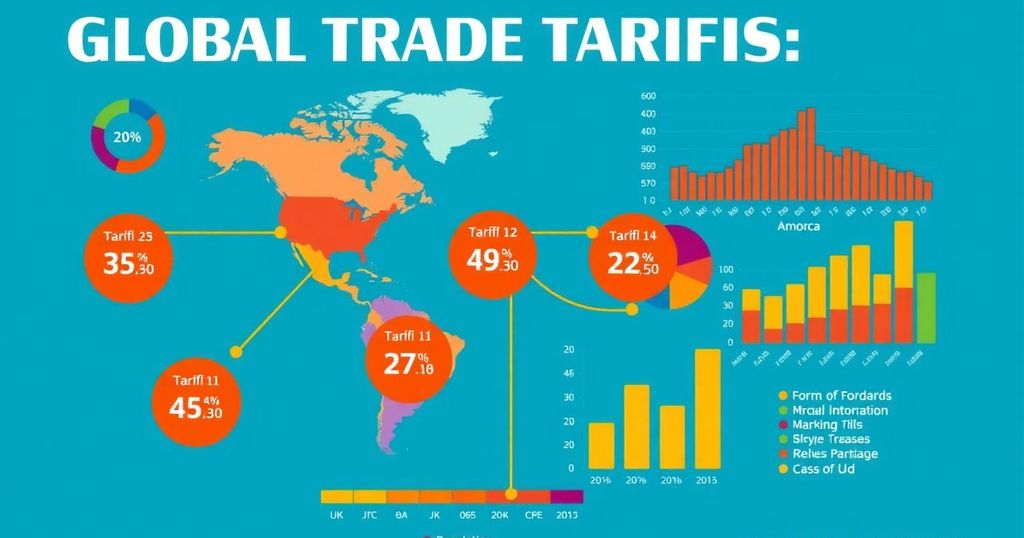Uruguay’s economy grew by 3.1% in 2024 after a drought, yet a slowdown is anticipated in 2025, returning to moderate growth trends. Key industries such as agriculture and energy performed strong, but concerns exist around investment and household consumption. Economic policies will be crucial for sustainable growth.
In 2024, Uruguay’s economy exhibited a 3.1% expansion, recovering from the adverse effects of a significant drought experienced the prior year, as revealed by national accounts data from the Central Bank of Uruguay (BCU). However, economists caution that growth is anticipated to revert to slower historic levels in 2025.
The final quarter of 2024 witnessed a GDP increase of 3.5% on a year-over-year basis, alongside a 0.3% rise in seasonally adjusted terms compared to the preceding quarter. This growth was largely fueled by enhanced agricultural yields, robust hydropower generation, increased trade activities, and a rise in pulp production. Nevertheless, this progress was somewhat mitigated by a downturn in the construction sector, largely attributed to the conclusion of a significant railway project.
Experts acknowledge that while the recent figures are optimistic, they primarily signify recovery rather than an acceleration in growth. “These are good numbers, but Uruguay is not taking off—it’s recovering,” stated economist José Antonio Licandro in an interview with El País. He further indicated that the anticipated growth rate for 2025 would be “solid, but at our own pace,” underscoring Uruguay’s historically moderate growth.
The agriculture, energy, and manufacturing sectors showed remarkable performance, with energy increasing by 19.6% and agriculture by 11.3%. On the demand side, external factors predominantly spurred growth, highlighted by an 8.3% surge in exports.
Looking forward, economists predict a deceleration in growth rates for 2025, estimating a range of 2% to 2.5%. “Without one-off effects like the drought rebound, we expect a more moderate pace,” noted Luciano Magnífico from Exante. There are also concerns surrounding weak household consumption and diminishing investment; Marcelo Sibille from KPMG reported modest growth in household consumption in 2024 and a decline in fixed investment despite a minor recovery in the latter half of the year.
The updated data from BCU revealed revisions for previous years, adjusting GDP growth for 2023 from 0.4% to 0.7%, and revising 2022 down from 4.7% to 4.5%. In 2025, it is anticipated that domestic consumption and investment will assume a more pivotal role in driving growth, particularly as external conditions may deteriorate. “The challenge now is to create conditions for faster income growth,” asserted Sibille, emphasizing the necessity for policies that enhance investment and productivity.
Economists also stress the significance of forthcoming policy decisions, including interest rates, wage negotiations, and the national budget due in October, which will be crucial in determining the trajectory of Uruguay’s economy. With a per capita GDP of approximately $23,500 and a total GDP near $81 billion, Uruguay maintains a steady economic performance by regional standards. However, as El País posits, the key question remains whether the nation can transcend its historical growth limitations.
In conclusion, while Uruguay’s economy has shown signs of recovery with a 3.1% growth in 2024, experts expect a slowdown in 2025, reverting to historical growth rates. The agriculture, energy, and manufacturing sectors demonstrated substantial growth, but challenges like weak household consumption and investment persist. Upcoming policy decisions regarding interest rates and budget allocations will be pivotal in shaping the economic landscape going forward.
Original Source: en.mercopress.com




